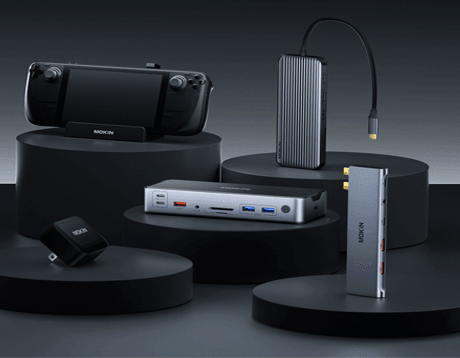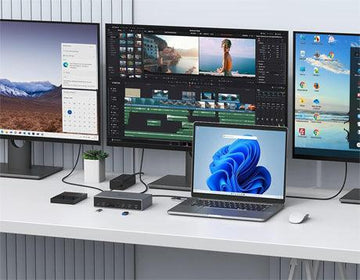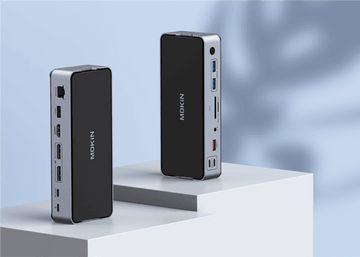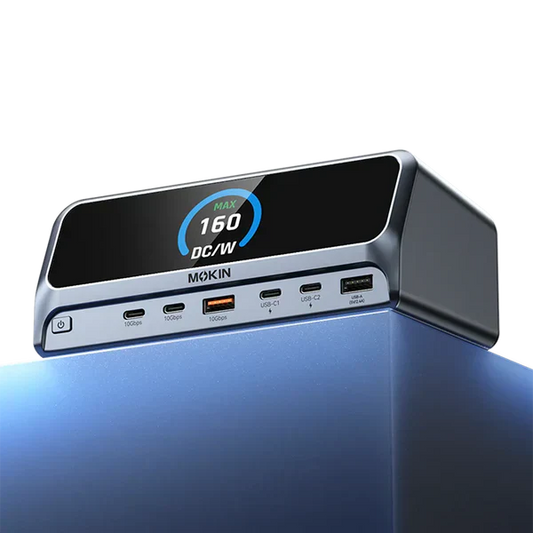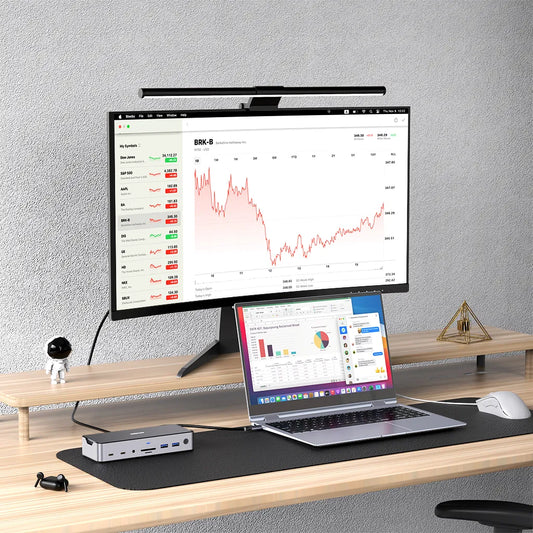Connecting The Dots: USB C Hubs, Docks, And Adapters
Contents
1. Embracing the Power of USB-C
—————————
The tech world is buzzing about USB-C, and for good reason. This increasingly popular technology offers faster data transfer and charging speeds through versatile USB Type-C ports.From laptops and smartphones to wireless chargers and even cars, industries across the board are adopting USB-C connectors.
With the rise of remote work and our growing reliance on digital devices, USB-C has become the new standard, simplifying our lives with its reversible design and international compatibility.
2. Unlocking Potential: Hubs, Docks, and Adapters
—————————

These peripherals act as bridges between devices, expanding functionality and connectivity.
3. Understanding the Trio: Hubs, Docks, and Adapters
—————————
- USB-C Hubs:
These compact devices expand the capabilities of a single USB-C port by offering multiple connections like USB-A, HDMI, DisplayPort, and more. Perfect for on-the-go professionals or anyone needing to connect various peripherals at once.
Small and compact
Plug and play
Several ports expansion
- USB-C Docks:
Transforming laptops into powerful workstations, docks provide a comprehensive solution with a wider range of ports, including additional USB-C and USB-A ports, video outputs, audio jacks, and even network connections. Ideal for stationary setups and creating a desktop-like experience.
For stationary desktop
More ports and form factors
Multiple technologies, including Thunderbolt and DisplayLink
Some support pass-through charging
- USB-C Adapters:
Bridging the gap between old and new technologies, adapters ensure seamless connections between your USB-C device and peripherals with older connection types like USB-A, VGA, or Ethernet.
USB C to USB adapter
USB C to HDMI adapter
USB C to Ethernet adapter
USB C to multi-port adapter
Differences between USB C Hubs, Docks, and Adapters
—————————
They all offer similar functions but differ in size, compatible devices, and price.
Hub
Docking Station
Adapter
Small and compact
For stationary desktop
USB C to USB adapter
Plug and play
More ports and form factors
USB C to HDMI adapter
Several ports expansion
Multiple technologies, including Thunderbolt and DisplayLink
USB C to Ethernet adapter
Some support pass-through charging
USB C to multi-port adapter
4. Applications Across Industries
—————————
USB-C hubs, docks, and adapters
offer versatile solutions for various applications:
Category Description Workstation Expansion Enhance your workspace efficiency by connecting multiple monitors, keyboards, mice, and peripherals to your laptop. Data Management Achieve high-speed data transfer and backups between devices such as laptops, cameras, and external storage. Presentations & Entertainment Connect to external displays or projectors for impactful presentations or enjoy high-definition content on larger screens. Fast Charging Power Delivery technology ensures rapid charging for your laptops, smartphones, tablets, and other compatible devices. Creative Workflows Professional-grade audio and video editing is facilitated with specialized hubs and adapters that offer high-quality input/output options. Gaming & VR Experience immersive gaming without lag using hubs with high-bandwidth USB and video outputs for connecting gaming peripherals, external graphics cards, and VR headsets. Travel & Remote Work Compact and portable hubs and adapters provide essential connectivity on the go, perfect for travelers and remote workers.
5. Choosing the Right USB-C Accessories
—————————
Several factors come into play when selecting the perfect USB-C accessory:
Category Description Compatibility Ensure the accessory supports your device's specific protocols and operating system. Connectivity Identify the types and number of ports you need based on your peripherals. Power Delivery If you need to power connected devices, choose an accessory with adequate power output. Data Transfer Speed Consider the speed requirements for your data transfer needs. Video Output Determine the number of external displays and the required video connections (HDMI, DisplayPort, VGA). Size and Portability Choose a compact and lightweight design for portability or a larger docking station for a stationary setup. Price and Value Balance your budget with the features and quality offered by different brands.
RECOMMENDED BY US
6. Future Trends in USB-C Technology
—————————
USB-C continues to evolve, with potential advancements on the horizon:
Category Description Faster Data Transfer Optical data transfer could offer significantly higher speeds and reduced interference. Bi-Directional Power Delivery Devices could charge each other or act as power sources in emergencies. Enhanced Audio Support Improved audio quality and multi-channel audio could elevate the listening experience. Data Encryption Integrated encryption would ensure secure data transfer between devices. Smart Device Recognition & Power Management Devices could automatically configure themselves and optimize power usage for efficiency. Wireless USB-C Wireless data transfer, display connections, and power delivery could offer greater flexibility and convenience.
7. Unlock Your Digital
Potential with USB-C
—————————
USB-C is more than just a connector; it's a gateway to a more efficient and connected digital world.
By understanding its capabilities and utilizing the right hubs, docks, and adapters, you can unlock the full potential of your devices, simplify your setup, and enhance your productivity. Explore the world of USB-C and embrace the future of connectivity.

MOKiN 13-IN-1 USB-C Laptop Charging Station with 2.26-inch LCD Smart Display

